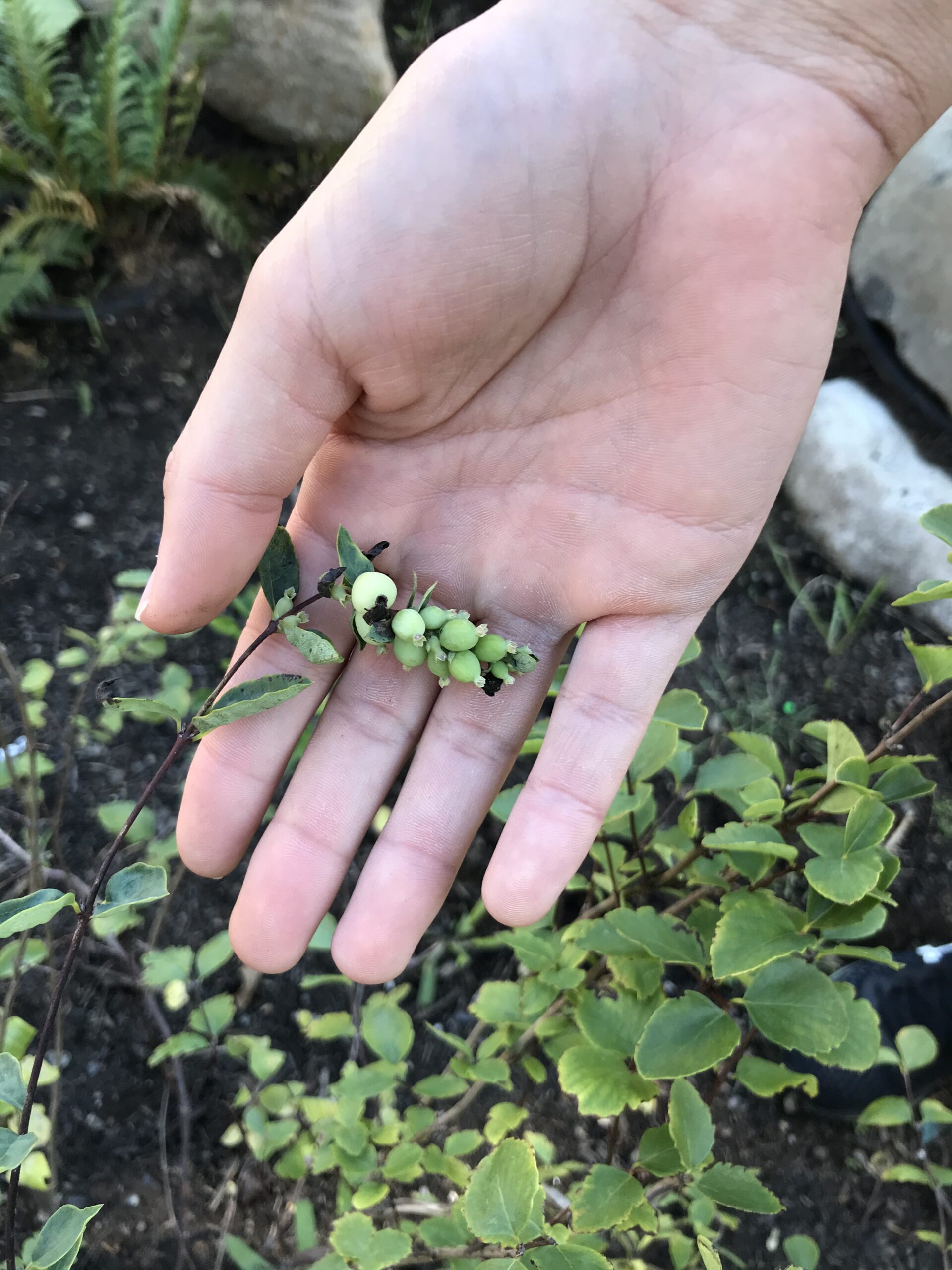What do you do when you’re stuck at home for the summer in a pandemic? Hyla grad Chloe Boeker made the most of it.  She turned her passion for the environment and a love for the Puget Sound into a community project involving family, friends, and environmental experts. Luckily for us, she selected Hyla as the site: a new rain garden in our orchard behind the barn.
She turned her passion for the environment and a love for the Puget Sound into a community project involving family, friends, and environmental experts. Luckily for us, she selected Hyla as the site: a new rain garden in our orchard behind the barn.
Environmental activism runs in the family. Chloe’s uncle, Todd Vogel, is the Managing director at Loom, a foundation that funds projects “at the intersection of equity and the environment.” The two teamed up their resources to see what they could learn together and how their family could support the health of local watersheds that feed into Puget Sound. Chloe and her uncle came up with the idea of a summer project to encapsulate these opportunities a
nd involve other students and experts.
First Chloe talked to BHS science teacher, Jason Uitvlugt, who shared the opportunity with his AP Environmental Science students. Soon a small group of students formed to create Rain Gardens for a Cleaner Puget Sound. Over the summer, the high schoolers learned from geologists, aquatic biologists, environmental engineers, and designers specializing in environmental integration work. “Everybody got to see how to connect your passions to making a living,” explained Todd.
One of the local experts, Deb Rudnick, aquatic geologist, shared her perspective: “We walked the lower Schel-chelb watershed, in which Hyla
is located, and talked about the ecology and impacts of human development and how our choices matter greatly for how our watersheds function not only for people, but for all the life they support. The students were attentive and inquisitive, and I was so impressed with their rain garden project at Hyla!”
Next, the students applied what they learned to design the rain garden. The student crew studied soil composition and determined the w
ater infiltration rate. With the dimensions of the barn and statistics for annual rainfall, they calculated that half of the barn roof captures nearly 17,000 gallons of water each year. To give the garden a natural appearance, they used integral calculus to create a bean shape. Under the summer sun, these students dug deep into the soil, making paths for pipes, tapping into the downspout at the bottom of the barn gutters.
Bainbridge Gardens staff helped each student select a plant so that the garden also reflects the unique individuals that built it. Snowberry, red osier dogwood, kinnikinnick, and Oregon grape can all be found in the rain garden, along with a colorful sign created by one of the students. In two years, all of the plants will be drought tolerant. Finally, the students also designed and created a book with lovely illustrations that documents the project and explains the work they did.
Hyla applauds everything about this project. A student-driven idea took shape with the help of adults who shared their expertise to encourage a new generation of environmental activists. Their work was also celebrated by Sustainable Bainbridge in a recent post about the rain garden. Later this year, Chloe and the rain garden crew will talk to current Hyla students about the project to continue the cycle of learning.
In this season of gratitude, Hyla extends our thanks to this group of environmentalists for a beautiful addition to our campus that will inspire others for years to come.
This rain garden crew includes: Gaelen Lee (Hyla ‘17), Todd Vogel, Chloe Boeker (Hyla ‘17), Owen Knight, Kaitlyn Hung. Not pictured: Jenna Allard, Lauren Heinzelman, Katie Irvin, Miranda Schmidt, John Velisaris. Many thanks also to community experts who provided time and guidance.
